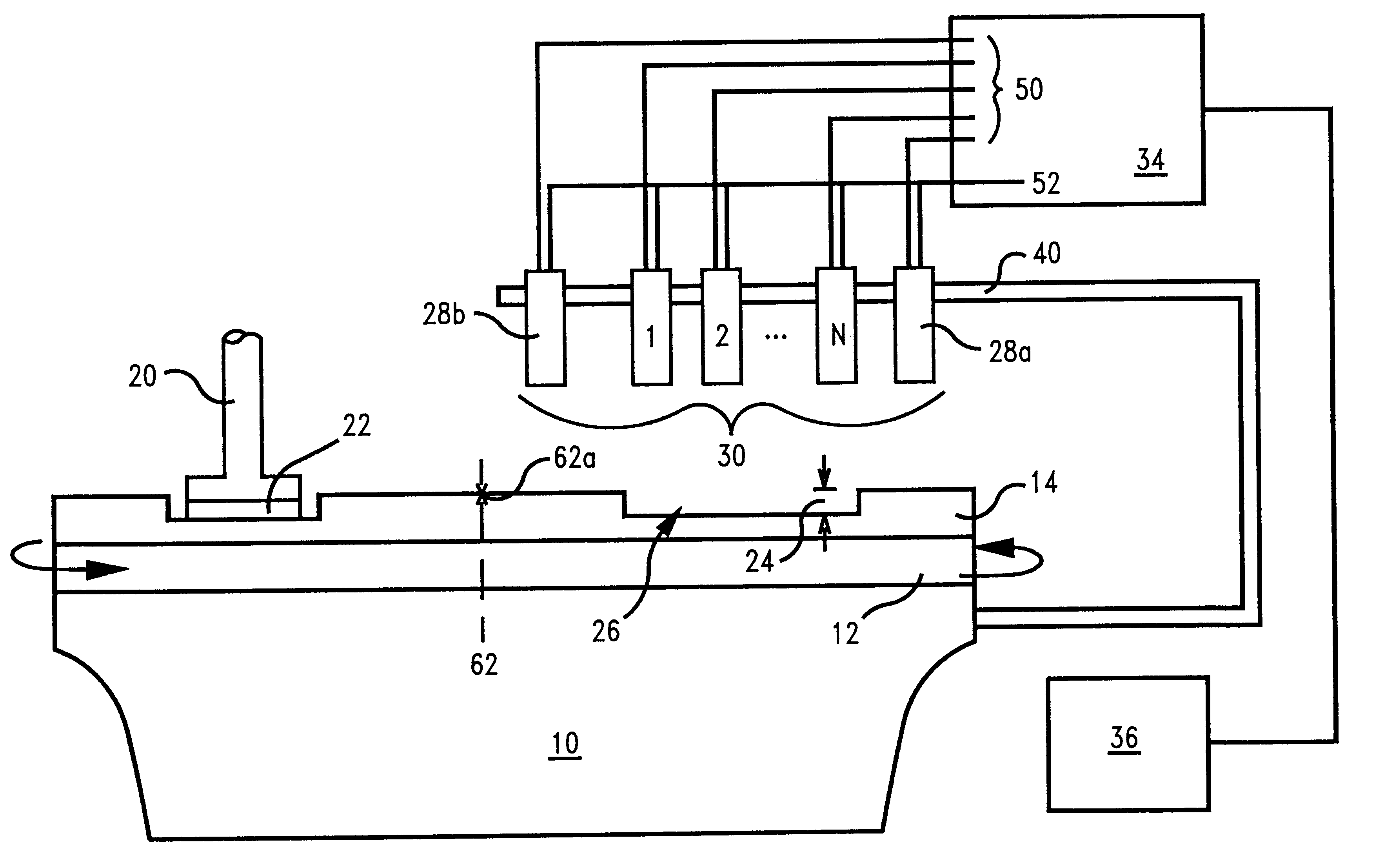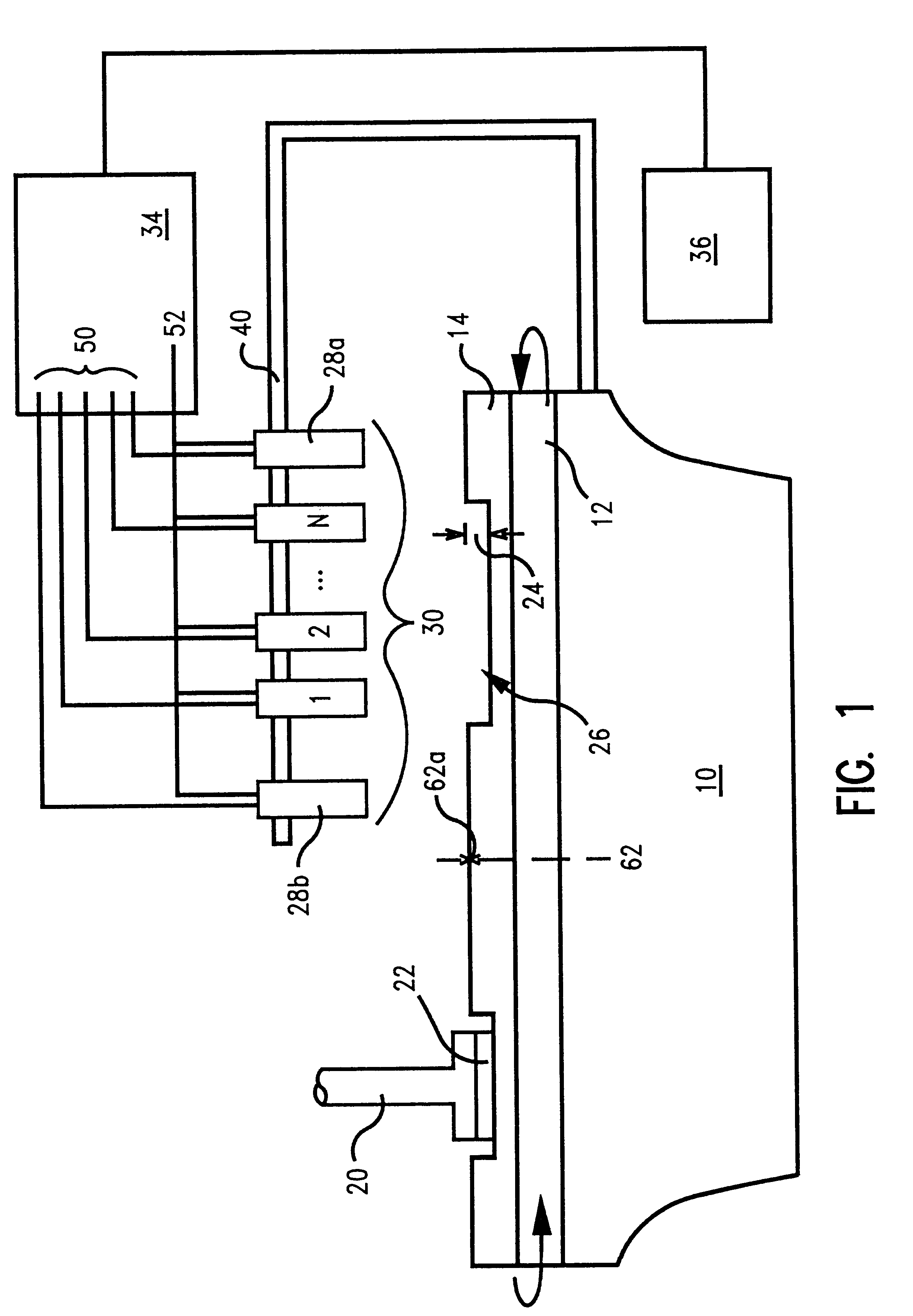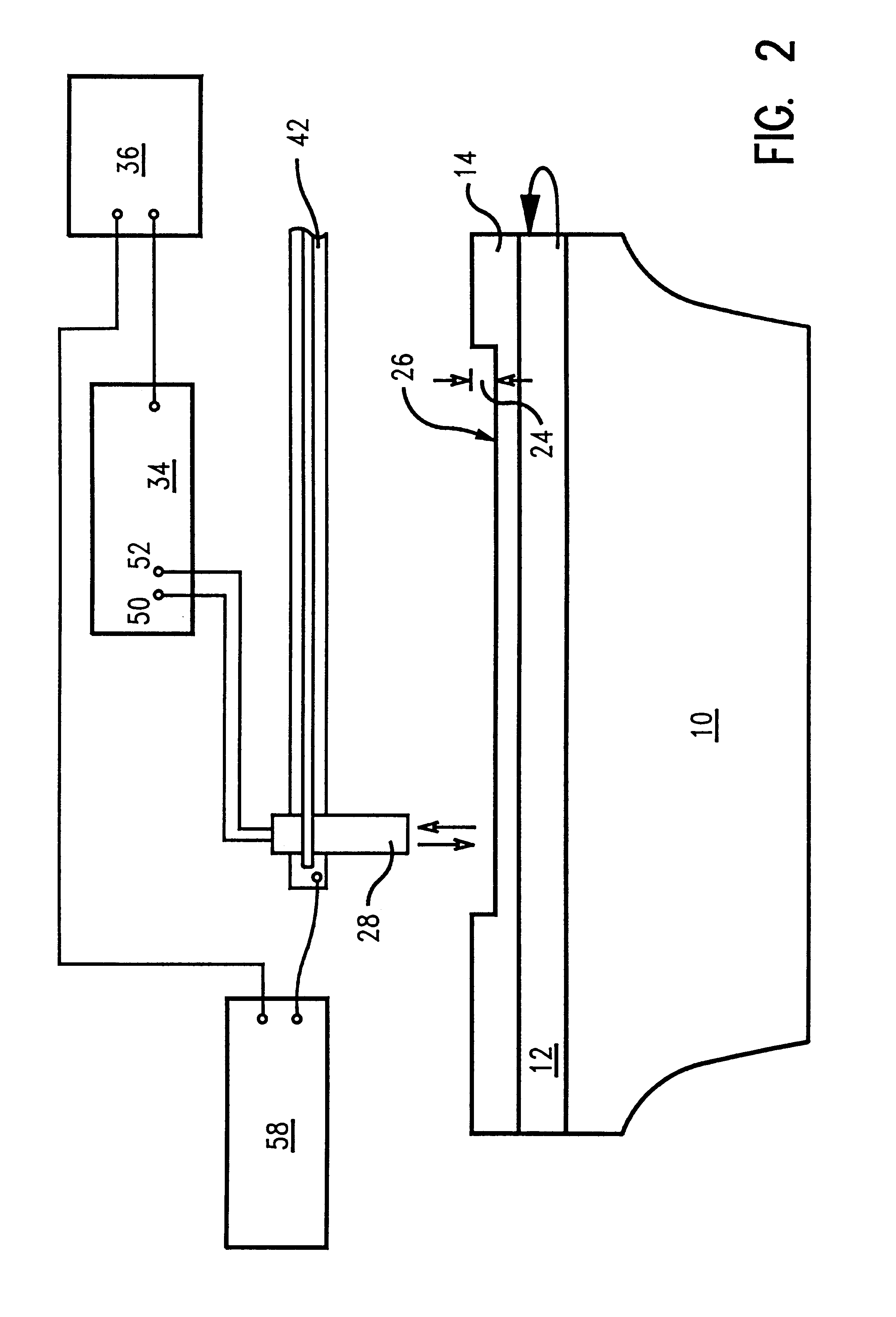Method and apparatus for monitoring polishing pad wear during processing
a technology of micro-fluidic wafers and polishing pads, applied in the direction of grinding machine components, manufacturing tools, lapping machines, etc., can solve the problems of reducing the polishing removal rate, affecting the removal of a quantity of pad material, and reducing the uniformity of polishing pad removal, so as to reduce the degradation of polishing pad uniformity
- Summary
- Abstract
- Description
- Claims
- Application Information
AI Technical Summary
Benefits of technology
Problems solved by technology
Method used
Image
Examples
Embodiment Construction
)
In describing the preferred embodiment of the present invention, reference will be made herein to FIGS. 1 and 2 of the drawings in which like numerals refer to like features of the invention. Features of the invention are not necessarily shown to scale in the drawings.
The present invention addresses the problems associated with the prior art of: a) removing polishing pad material in an unregulated, non-uniform manner; b) extending the polishing pad's useful life; c) maintaining and improving polishing pad uniformity throughout the chemical-mechanical polishing process; d) performing pad monitoring without damaging the pad surface; and, e) sensing when wafers being polished come off the wafer carrier and remain on the polishing table.
This is accomplished in the present invention by measuring and monitoring the diminished pad thickness using a non-intrusive, non-contacting measurement system, and creating a closed-loop system for adjusting the chemical-mechanical polishing tool's pro...
PUM
| Property | Measurement | Unit |
|---|---|---|
| distance | aaaaa | aaaaa |
| thickness | aaaaa | aaaaa |
| ultrasound energy | aaaaa | aaaaa |
Abstract
Description
Claims
Application Information
 Login to View More
Login to View More - R&D
- Intellectual Property
- Life Sciences
- Materials
- Tech Scout
- Unparalleled Data Quality
- Higher Quality Content
- 60% Fewer Hallucinations
Browse by: Latest US Patents, China's latest patents, Technical Efficacy Thesaurus, Application Domain, Technology Topic, Popular Technical Reports.
© 2025 PatSnap. All rights reserved.Legal|Privacy policy|Modern Slavery Act Transparency Statement|Sitemap|About US| Contact US: help@patsnap.com



